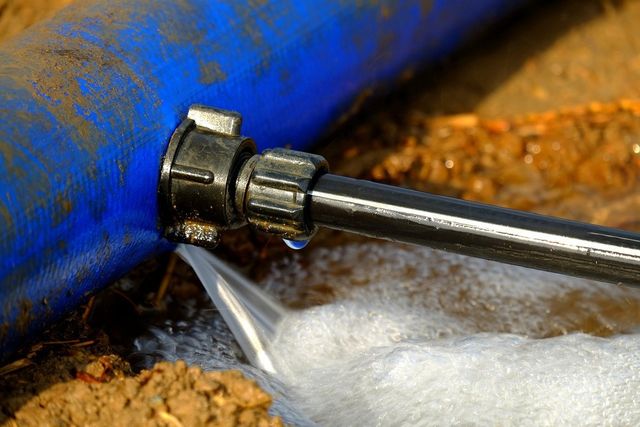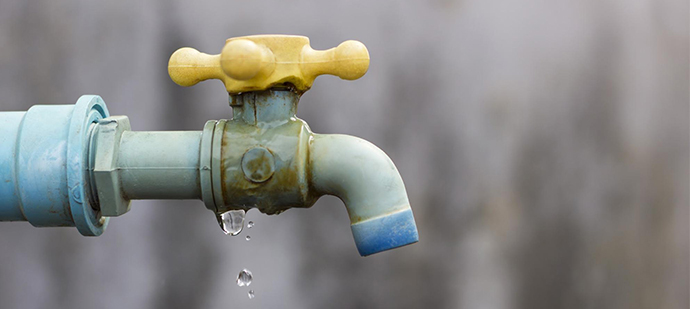6 Ways to Locate Concealed Water Leakages in Your Home
6 Ways to Locate Concealed Water Leakages in Your Home
Blog Article
They are making several great pointers on Hacks to detect leaks as a whole in this great article directly below.

Early detection of dripping water lines can reduce a prospective catastrophe. Some tiny water leaks may not be noticeable.
1. Check Out the Water Meter
Every home has a water meter. Examining it is a proven way that aids you find leaks. For starters, switch off all the water sources. Guarantee nobody will certainly purge, make use of the tap, shower, run the washing maker or dishwasher. From there, most likely to the meter as well as watch if it will change. Given that no one is using it, there ought to be no motions. If it moves, that indicates a fast-moving leakage. If you find no changes, wait a hr or two as well as examine back once more. This indicates you might have a slow leak that could even be underground.
2. Examine Water Usage
Assess your water bills and also track your water intake. As the one paying it, you must discover if there are any kind of disparities. If you identify sudden changes, regardless of your usage coinciding, it suggests that you have leakages in your plumbing system. Keep in mind, your water bill need to fall under the same variety on a monthly basis. A sudden spike in your costs shows a fast-moving leak.
On the other hand, a constant rise on a monthly basis, despite having the very same habits, shows you have a slow-moving leakage that's likewise gradually intensifying. Call a plumber to extensively examine your property, particularly if you really feel a warm area on your flooring with piping below.
3. Do a Food Coloring Test
When it involves water intake, 30% comes from toilets. Examination to see if they are running properly. Decrease specks of food color in the storage tank and wait 10 mins. If the shade in some way infiltrates your dish during that time without flushing, there's a leak between the storage tank and bowl.
4. Asses Outside Lines
Do not fail to remember to check your outdoor water lines also. Test faucets by connecting a garden tube. Should water seep out of the connection, you have a loose rubber gasket. Change this and also make sure all connections are limited. If you've got a sprinkler system, it will help get it expertly took a look at and maintained annually. One little leakage can waste lots of water as well as spike your water expense.
5. Assess the circumstance and also examine
Property owners need to make it a routine to inspect under the sink counters as well as also inside cupboards for any bad odor or mold and mildew development. These 2 red flags show a leak so timely interest is required. Doing regular assessments, even bi-annually, can conserve you from a significant problem.
If you understand your home is already old, maintain a careful eye on your heating systems, pipes, pipes and so on. Check for discolorations and also deteriorating as most pipes as well as appliances have a life expectancy. They will likewise normally weaken due to tear and use. Don't wait for it to escalate if you presume dripping water lines in your plumbing system. Call a professional plumber today so you do not wind up with a terrible mess in your house.
Early discovery of leaking water lines can alleviate a prospective catastrophe. Some little water leakages may not be noticeable. Examining it is a guaranteed means that aids you discover leakages. One little leak can squander tons of water and surge your water costs.
If you presume dripping water lines in your plumbing system, don't wait for it to intensify.
WARNING SIGNS OF WATER LEAKAGE BEHIND THE WALL
PERSISTENT MUSTY ODORS
As water slowly drips from a leaky pipe inside the wall, flooring and sheetrock stay damp and develop an odor similar to wet cardboard. It generates a musty smell that can help you find hidden leaks.
MOLD IN UNUSUAL AREAS
Mold usually grows in wet areas like kitchens, baths and laundry rooms. If you spot the stuff on walls or baseboards in other rooms of the house, it’s a good indicator of undetected water leaks.
STAINS THAT GROW
When mold thrives around a leaky pipe, it sometimes takes hold on the inside surface of the affected wall. A growing stain on otherwise clean sheetrock is often your sign of a hidden plumbing problem.
PEELING OR BUBBLING WALLPAPER / PAINT
This clue is easy to miss in rooms that don’t get much use. When you see wallpaper separating along seams or paint bubbling or flaking off the wall, blame sheetrock that stays wet because of an undetected leak.
BUCKLED CEILINGS AND STAINED FLOORS
If ceilings or floors in bathrooms, kitchens or laundry areas develop structural problems, don’t rule out constant damp inside the walls. Wet sheetrock can affect adjacent framing, flooring and ceilings.
https://www.servicemasterbyzaba.com/blog/how-to-detect-water-leakage-in-walls/

I am just very intrigued by Hacks to detect leaks and I hope you enjoyed the entire piece. If you please take the time to promote this page if you enjoyed reading it. I cherish reading our article about Leaking water lines.
Report this page